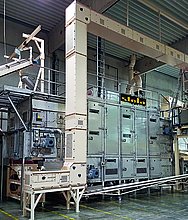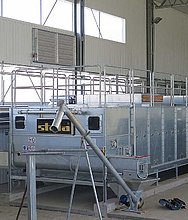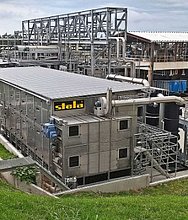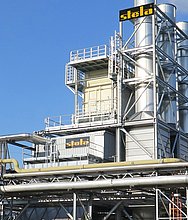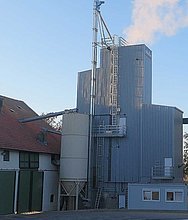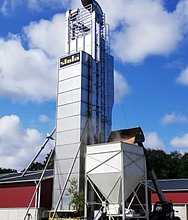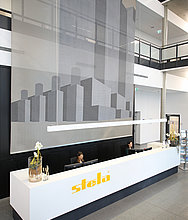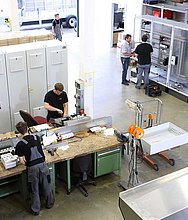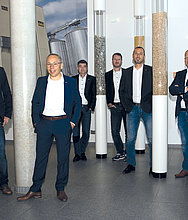Stela upgrades Biturbo continuous dryer with active heat recovery
From autumn 2021, up to 30 tonnes of organic maize will be processed every hour by the Reding drying cooperative in its new stationary continuous dryer from Stela. The biturbo technology used by the Bavarian specialist provides not only impressive throughput and gentle temperature, but also greater flexibility in terms of batch size. The new model is also equipped with a heat recovery system, making it even more energy-efficient.
The almost 30 silos, which hold up to 100,000 tonnes of harvested crop from the Bavarian drying cooperative Reding, are hard to miss from the A3 motorway. The cooperative was founded in 1969 by its 100 founding members to organise the drying and storage of grain, rapeseed and soybeans – but primarily maize – more efficiently so that they could grow together. In 2019, they celebrated their 50th anniversary. This partnership concept played a role in the most recent investment made by the now 900-member association, as the manufacturer of the seventh dryer to be added to the plant this year, Stela Laxhuber, has been involved from the very beginning.
Prototype followed by repeat order with special feature
2000 tonnes of wet maize have been prepared daily for storage in the six dryers available until now. These enormous capacities are particularly important in autumn to ensure that the fresh harvest retains its high quality. This September, right in time for the maize season, a seventh dryer will be put into operation. Georg Grill, the cooperative's managing director, had no doubts about working with Stela again. “We are more than just customer and supplier now. The decades of cooperation and the collaborative design of our sixth dryer have created a true partnership of equals.” The seventh dryer is a further development of this prototype. Reding and Stela have continued to work on energy efficiency and have developed a highly flexible system specifically designed to meet the requirements of organically grown maize.
Two temperature zones for gentle drying
The stationary AgroDry® continuous drying system with STELA biturbo technology can dry 30 tonnes of organic maize from 30 to 15 % moisture within one hour. To maintain the quality of the dried material, it runs through two different temperature zones. Wet material is fed from above into the first zone at a gentle 100 to 110 °C drying temperature. In the dry material area below, the final drying takes place at 120 to 135 °C to achieve the final moisture content. To do this, fresh air ➀ is drawn in at the bottom of the drying unit, heated by a gas surface burner ➁ and, together with a mixture of preheated supply air from the cooling zone and unsaturated recirculated air from the recirculation area ➂ of the lower drying section, is delivered to the dry-product area ➃. In this dry product area, the product can be treated with higher hot air temperatures of 120 to 135 °C or higher without damaging the maize, as by this stage the moisture content of the product has already been reduced to 18 to 20 %. The still relatively warm exhaust air ➄ from this zone is then recirculated by another axial fan ➅ to the upper area of the drying system to be mixed again with heated supply air ➆ from another gas surface burner to achieve a product-friendly warm air temperature of approx. 100 to 110 °C for pre-drying. This temperature can be flexibly adjusted depending on the product moisture and level of ripeness. This warm air is first fed through the upper wet product area, ➇ and then a third fan ➇ releases the extracted moisture as exhaust air into the environment.
Energy-efficient drying of small batches of organic maize
Organic maize is not often grown in large quantities in Germany. The cooperative therefore needs a very flexible dryer. “By dividing it into two-by-two drying zones, it can be operated at partial load with a quarter of the output for smaller batches,” explains Christoph Höfler, sales contact at Stela. “It can also be used to support the drying of conventionally grown crops if additional capacity is required.”
IMAGE TEXT
With the help of a clever system, the benefits of heat recovery are used to dry the product very gently. (Graphic: Stela Laxhuber)
The Reding drying cooperative has been using Stela dryers since it was founded in 1969. Six of the dryers have been reliably performing year after year. (Photo: Stela Laxhuber)











